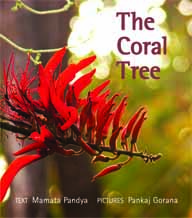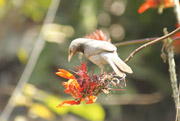Recently I spent two marvellous months at the Brockwood Park School in Hampshire in England. My mission : To make the library a living space for staff, students and other users. So the question was: Could I do it ? The school has international students from ages 14 to 18 and has a very unusual and unique ambience in terms of intention, curriculum and living. (Please check it out on the website and while you are at it, you may read my piece on the blog there.)
It also has an amazing collection of books and has never had an accession list. Books are borrowed by a manual entry in a notebook as you leave the library. So with no malice intended, many books have got misplaced or even lost. I was asked if I could set up a system of recording the books which to an approximate estimate numbered close to 20,000! The students had got used to a certain casual relationship with the library which had them take it much for granted. So should I take the next plane back to Bangalore, I wondered?
However, to tell you quickly, this story has a happy ending and in the process I discovered that a library can be alive and vibrant no matter what state it is in, geographically and psychologically (!), it can be made a user-friendly place by bringing it into people’s consciousness in light and appealing ways and finally there is no package which can do it. All it takes is relationship….with each and every user minute by minute, day by day…and suddenly in about two weeks I saw more and more response and more and more interaction each and every hour, almost!
I opened the innings by taking a space on the main noticeboard which is the heart and soul of Brockwood. I called it “LIBRARY MATTERS” and began by putting up a cartoon related to reading. Under that I added some tit-bits about the library and anything else that might catch young people’s attention. Next to that I designated a “POETRY SPACE” and put up a poem of Mary Oliver to start it off. Slowly I could see students and staff stop and read. Each week I changed the matter! That was crucial. I had carried a stock of rare cartoons from the New Yorker to last me for the whole stay. Next breakthrough was when staff, older students called mature students and even the students began to contribute to this board. Voila!
In the library itself, I chose a selection of books to display each week. One student, Betsy who was helping to clean the library spotted a book she had read. So I immediately asked her to write a few lines about it for others to read. That really took off. If anyone stopped by to look at a book and to tell me they had read it, they were caught…to write a few sentences recommending it! I made contact with teachers asking them to tell me what they looked for in their areas of interest. Soon a suggestion book came up and staff and students slowly began putting down books they felt the library should have. Next was to make sure we got some of those books!
At the school meeting, which is like an Assembly, I talked about new books that had come in including the genre of graphic literature which was new to them. I also showed a film of book talks presented by CFL senior students for Brockwood students. They were quite touched by that and wanted to send something in return. That was the right moment to introduce book talks there. Finding a slot was tough but I hung in there until I got a time…after supper on Sat. nights (Tues. and Wed. are the weekends) and we began. Coco, a 14 year old student had already swum into my ken when she came looking for books to read. She gave a brilliant book talk and we were off. Weekly book talks had taken root.
By the time I left, I had also managed to take a group of interested students to the British Library in London. (By the way, if you are ever there, do not miss a visit.)
Meanwhile the project of accessing books was also continuing and I sat glued to the computer whenever I could to enter as many books as I could to give them a jolly good start to this project. Every book I entered was tagged with a small dot so before I left I did a presentation to the school to explain how they could use the programme ( a software designed by an old student). They were thrilled and eager to use it, so hopefully in future we will know where the missing books are!!
Too soon , it was time for me to leave. The affection and response I had got were overwhelming. Gifts, chocolate cake. a designer book with personal writings and hugs and promises to keep the library as active and alive! I couldn’t have asked for more.
All they had needed was a body in the library….a warm one!!
Usha



